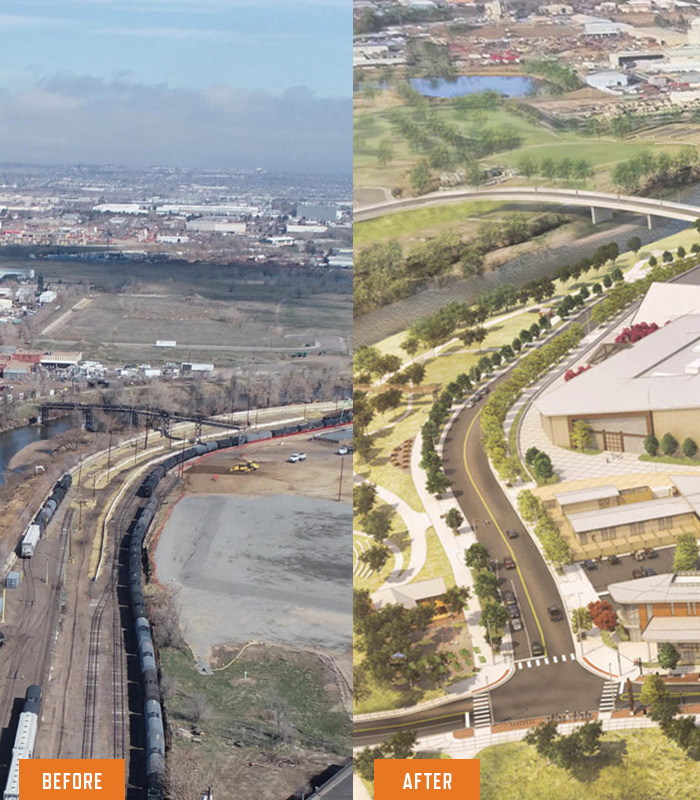The Riverfront
For generations, the river’s edge was inaccessible from the site. Now, it’s becoming an amenity and a destination.
A Place to Gather
The South Platte River runs along the future western border of the National Western Center. The riverfront will be a grassy open space for recreation, relaxation and small community events.
It’s a space for planned and impromptu activities — from live music and citizen science projects to quiet walks and bike rides. An informal 250-person open-air amphitheater will be a place to take in a performance, while several colorful public art pieces will help bring the area to life.
The open space connects to the Backyard for CSU Spur’s Hydro building, which is all about water, making it the perfect place for Spur’s K-12 educational opportunities.
For the first time, this site will connect to the neighborhood and nearby parks, via two new river bridges and the regional trail system.

A New Beginning
Denver residents value enhancing and protecting the city’s only river. Rehabilitating and revealing six acres of open space along the South Platte will make it accessible, healthy and safe for recreation — for residents and visitors alike. The City and County of Denver is performing this work as part of broader campus construction.
A River Runs Through It
The South Platte River forms in Park County, Colorado and joins its counterpart in North Platte, Nebraska. It has always served as a vital source of water on the high plains, including for the Arapaho nation and other indigenous peoples — the original stewards and inhabitants of the land. Its confluence with Cherry Creek, about 4 miles to the southwest of our site, was where the city of Denver was born.
Beginning in the 1880s, at this location, the river played a key role for meatpacking plants and other industrial uses. Also beginning in the 1800s, freight rail lines were built along the river’s edge here, followed in 1937 by an above-ground wastewater pipe that was paired with a second one in 1979.
In many cases, the industrial uses along the river had harmful environmental effects, including the meatpacking plants’ dumping of animal waste and other material.
Today, the National Western Center project is moving mountains – of railroad and wastewater pipes – to improve the riverfront and make it a family-friendly destination. The changes will improve water quality, the riverbank, and, most importantly, the quality of life for nearby residents.
We look forward to welcoming you to the riverfront!

